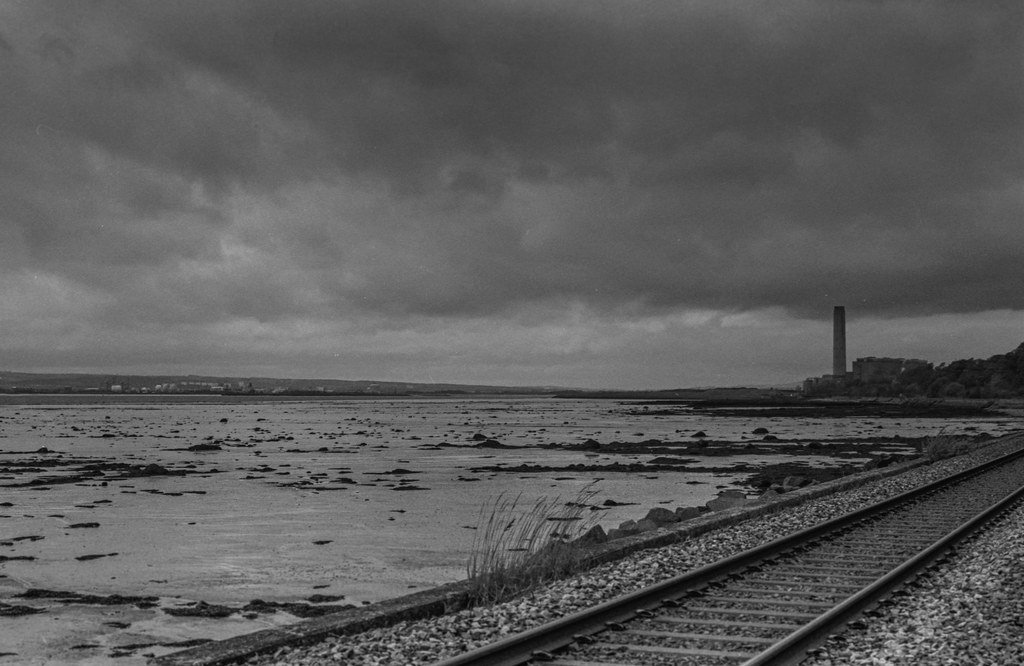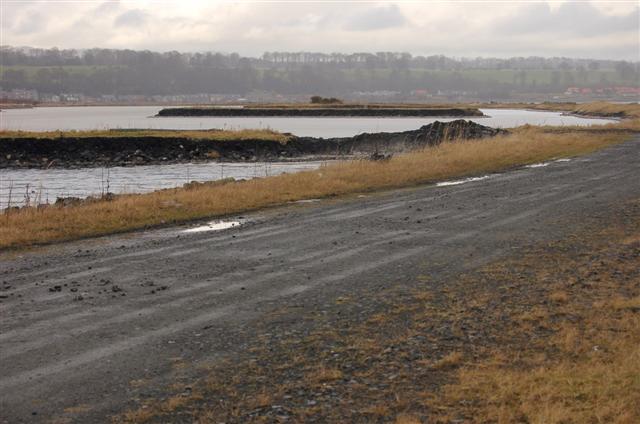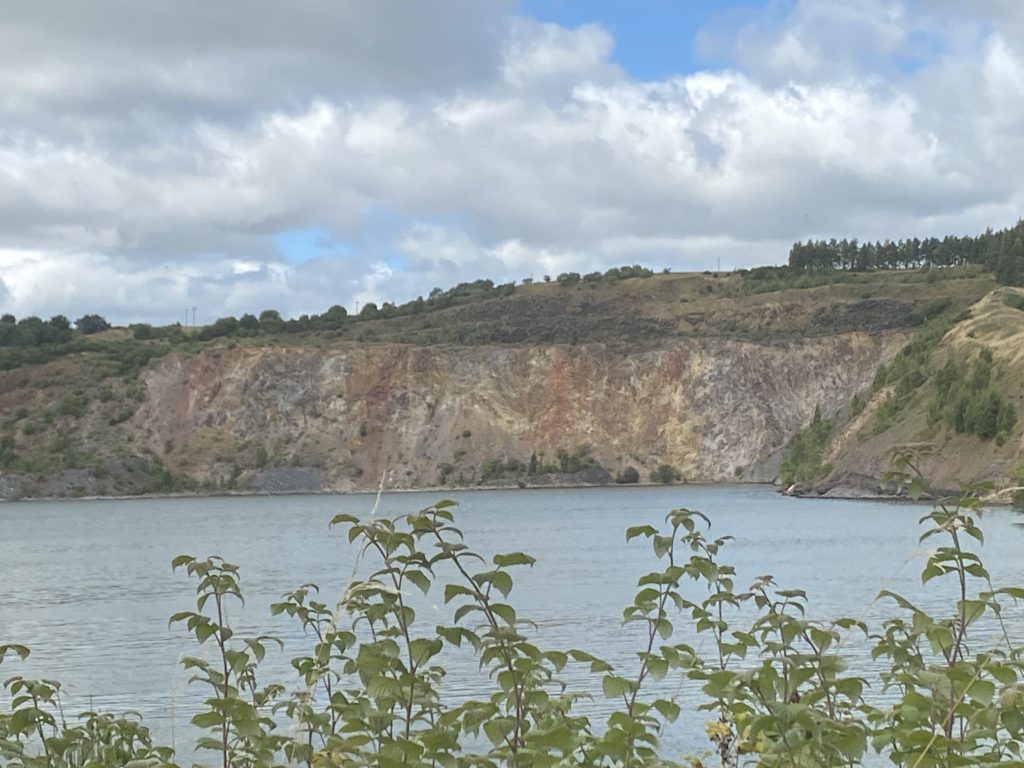By Ewan Gibbs
During August 2021, the centrality of energy to Scotland’s politics and contested future, and to understanding its recent past, were revealed through three major news stories. The first of these was the tension surrounding the UK government’s approach to the development of a new giant oilfield west of Shetland. Siccar Point Energy intend to develop the Cambo field with the backing of private equity investors. Scotland’s First Minister, Nicola Sturgeon, responded to pressure put on her by environmentalists through an open letter to the Prime Minister that cautiously, and perhaps reluctantly, urged Boris Johnson to reassess future oil developments.
“We are both well aware of the importance of oil and gas over many decades – not least in terms of jobs – to the Scottish and UK economies. We also understand that reducing reliance on domestic production of oil and gas, which we must do, without increasing imports – which would potentially increase emissions – depends on the development of alternatives.
However, the answer to these challenges – given the urgency of the climate emergency – cannot be business as usual. Instead, we must take decisions and make investments now to support – and accelerate – the development of these alternatives and thereby secure a just, but appropriately rapid, transition for the oil and gas industry, and the workers and communities currently reliant on it.”
Excerpt from Nicola Sturgeon’s Open Letter to Boris Johnson
Johnson caused controversy when he praised the green credentials of another Conservative prime minister, Margaret Thatcher, arguing that coal mine closures during her premiership paved the way for Britain’s leading role in transitioning to cleaner forms of energy. These comments were controversial given the extent of long-term harm the dramatic acceleration of pits closures caused in the coalfields as well as the dubious history behind Johnson retrospectively awarding the politicised assault on the coal industry ecological plaudits.More optimistically, a major advance in tidal energy generation technology was heralded off the coast of Orkney when the Orbital O2 turbine began supplying enough power to supply 2,000 homes on the islands. These developments are realising longstanding Scottish potential in innovative research by bringing Orbital, a Dundee-based engineering firm, much closer to developing commercial tidal energy production.
These stories exemplify the human drama and political struggles that have structured Scotland’s relationship with energy generation and related technologies. Miles Oglethorpe’s recent two part blog underlined the international significance of Scotland’s diverse energy history and the importance of preserving it. In this post I add to Miles’ important contribution by assessing how energy figures in our understanding of Scotland’s modern history.
It took me some time and perhaps even reluctance to become a self-regarding energy historian. As a PhD student, I studied the long rundown of Scotland’s coalfields. Initially, I understood these developments primarily through historical perspectives on deindustrialization developed by North American scholars who studied the closures of factories, smelters and mines in the Midwest and Canada’s Golden Horseshoe. Recording and explaining working-class experiences of economic change and the remaking of coalfield communities was the centre of my interests.
As my research developed, the centrality of power station investment choices to understanding the pace and logic of colliery closures became more and more apparent. These observations led me to studying records related to fuel policy at The National Archives after I had finished my PhD, which encouraged me to think of the period I was studying in terms of a transition between energy systems. Coal had been at the centre of the making of industrial Scotland and the concentration of its population in the thin ‘waist’ of the country, between Ayrshire in the South-West and Fife in the North-East. It was the fuel that provided competitive advantages for steelmaking and later sustained electricity generation.
As Miles highlighted, competition between advocates of varied technologies led to the displacement of coal by petroleum and nuclear to varying extents in the second half of the twentieth century. During 1972, the President of the National Union of Mineworkers Scottish Area, Michael McGahey, thoughtfully enunciated a humanist slanted Marxism when he explained that ‘Inanimate matter does not compete – it is the pecuniary forces behind various fuels which are in competition.’ McGahey was writing not long after he had led official pickets of the new gargantuan Longannet power station in Fife during the course of a successful strike for wage increases. These actions led to several miners being arrested and charged with mobbing and rioting before their eventual triumphant acquittal at Dunfermline Sherriff Court.

Clashes at Longannet and subsequent legal proceedings were among the most dramatic and visible examples of class and power in Scotland’s energy transformation, but their foundations lie in longer-term decisions that were the preserve of UK government officials and business interests as much as elected politicians. ‘Deindustrialization does not just happen’, Barry Bluestone and Bennet Harrison’s observation from their study of plant closures in the United States, is important to understanding how forward planning and capital investment decisions have consequences decades later. Rather than being merely technocratic, such choices ought to be understood as hugely, and often consciously, political.
My research at The National Archives revealed Ministry of Power officials gleefully arguing that the transition from coal to oil-fired power stations from the mid-1950s would disempower the ‘stranglehold’ unionised miners and railway workers held over Britain’s energy economy. Another American scholar, Timothy Mitchell, helped me to understand these choices in his view of ‘carbon democracy’: coal systems are comparatively open to the sabotage of industrial workers in advanced economies whereas oil systems tend to be closed through their reliance on less labour intensive infrastructures yet dependent on transnational flows of resources from the Global South.
Mitchell’s neat periodisation of the ages of coal and oil, with a transition around the end of the Second World War, is perhaps less convincing. Coal still mattered in Scotland until much more recently, with the age of significant coal burning only coming to an end when Longannet closed in 2016. Miles’ suggestion that we need to understand how energy generation has transformed the landscape is an important observation along with his emphasis upon daily relationships to forms of fuel and power.
Within the oral histories I recorded for my coalfields research, in contrast to today’s dominant perspective on the dangers of climate change, coal was commonly understood as a source of warmth, industrial advancement and economic security. One of my interviews took place in a former Coal Board house in Cardowan village, a stone’s throw from Lanarkshire’s last colliery, which was still heated by coal. Margaret Wegg, a Cardowan miner’s daughter whose husband had worked down the pit whilst she was employed at the colliery canteen, discussed how for her coal signified familiarity and homeliness.
In my more recent interviews and archival research I have been probing the context in which North Sea oil was politicised as an explicitly Scottish resource. My findings demonstrate that the earlier experience of coal’s British nationalisation and centralised reorganisation shaped opposition to the British state’s perceived mismanagement of Scottish minerals. Furthermore, oil became understood as a benefit with the potential to enrich small nations in the global context of decolonisation. Even comparatively moderate Scottish nationalists cited OPEC’s successful struggle for oil revenues and control of development against the majors, and the results, including Kuwait’s newfound fabulous wealth and the rapid development of social programmes in Libya, as examples to be followed.
Furthermore, the history of oil has been pivotal to framing the understanding of renewables in dominant projections for independence. This framing was especially apparent during the Scottish Governments Alex Salmond headed between 2007 and 2014. Renewables were often presented by the First Minister and other members of the government as a vital national resource that could deliver enrichment under a politically autonomous devolved and then independent Scotland.
Successive episodes of energy history are etched into our surroundings. I recently took part in two days of field research that were organised by Richard Irving and Laura Roe from the University of St Andrews’ Social Anthropology department. We visited the site of Longannet that Miles explored in his blog post but perhaps more spectacularly, we saw the effects of decades of burning low quality Upper Hurst coal that was supplied to the power station from nearby drift mines. The Valleyfield Lagoons were formed by the ash created at Longannet and have extended the coast to the extent that they now surround Preston Island, which was itself built on artificially created land for the purpose of coal mining and salt panning during the nineteenth century.

The last site we visited was Westfield. It was the site of a huge opencast development between 1961 and 1998 that a local man informed us was Europe’s biggest manmade hole. Large wind turbines stood beside the giant former mine, which is now filled with water. Less (see image below) inviting orange coloured water lay in an adjacent river, testament to the environmental damage that had taken place there. Combining hope and disappointment, Westfield encapsulates the conflicts over the use of natural resources and their control and ownership that have characterised modern Scotland. Unionised workers employed by a nationalised industry worked the opencast mine for most of its life. Yet opencast mining not only despoiled the area, its cheaper more capital intensive production also undermined employment in West Fife’s collieries, contributing to the closure of the last of the area’s local pits in the late 1960s.

Westfield windfarm invites a more optimistic conclusion through the repurposing of Scotland’s former coalfields for green energy and the funding that Scottish Power puts into community initiatives from the profits generated by the turbines. Scottish Power is something of a misnomer. Although it was formed through the privatisation of British electricity generation in 1990, the company is now owned and controlled from Spain as a subsidiary of Iberdrola. Wind has not been the hoped for antidote to deindustrialization. Instead, workers at Fife’s fabrication yards in Methil and Burntisland have suffered from repeated bankruptcies and mothballing as Scottish-based firms struggle to compete for work within cutthroat global supply chains.
McGahey’s observation from almost half a century ago reminds us that whilst natural resources from coal to oil and gas to wind and tidal have been pivotal to recent Scottish history, we have to understand them in terms of their constitutive role in human social relations. These themes will become only more pivotal as the energy future dominates political discussion and the urgency for socially just climate action continues to grow.




